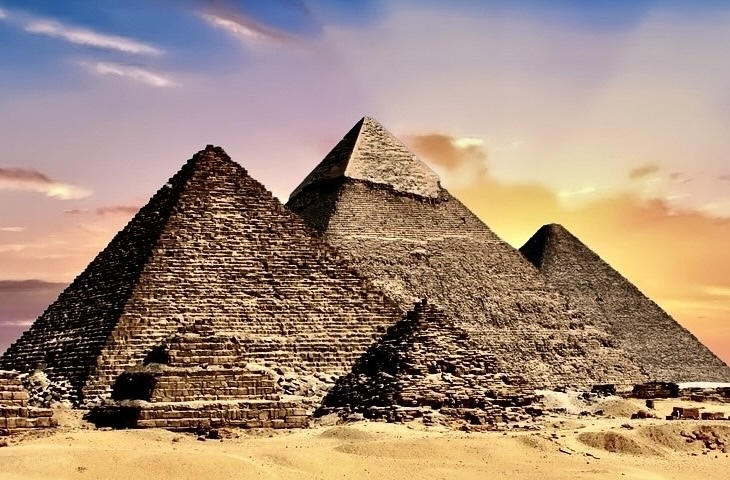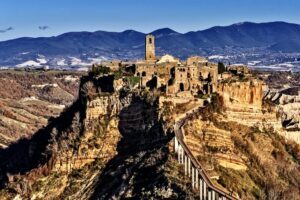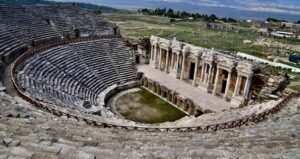
Hierapolis, the ancient city perched above the gleaming white travertine terraces of Pamukkale, is far more than a visual marvel. Beneath its shining façade lies a city of deep myth, sacred rituals, and mysterious structures that have captivated archaeologists and historians alike. Among its most enigmatic discoveries stands the so-called Pluto’s Gate, or as the ancients called it, the Ploutonion — a doorway not merely of stone and myth, but of fear and reverence.
Pluto’s Gate Through Ancient Eyes
The Ploutonion was no ordinary location. Ancient sources speak of it with a tone of both awe and dread. The geographer Strabo (64 BCE – 24 CE) describes how any animal brought near the gate would perish almost instantly, recounting how he threw sparrows into the space and watched them collapse, lifeless, in seconds. The Roman historian Cassius Dio similarly acknowledged its deadly properties, reinforcing the belief that this cave concealed a force beyond human comprehension.
The Ploutonion was dedicated to Pluto (Hades), the god of the underworld, and his consort Persephone. According to ancient beliefs, the toxic gas that emanated from the cave was seen as Pluto’s breath — a divine yet lethal exhalation from the world below. Strangely, members of the Galli, eunuch priests of the Cybele cult, were said to enter the cave unharmed. This gave rise to the belief that they either possessed supernatural protection or shared a sacred bond with the gods of the underworld. During ritual ceremonies, they performed sacrificial rites, offered prayers, and may have delivered oracular prophecies. A popular ritual involved selling small animals to visiting pilgrims. These animals would be released into the cave to demonstrate the fatal power of the gas — a dramatic proof of the gods’ presence and wrath.
The Rediscovery of a Deadly Sanctuary
For centuries, the precise location of Pluto’s Gate remained a mystery. That changed in 2013, when a team led by Italian archaeologist Francesco D’Andria uncovered the site during excavations near the Temple of Apollo. Their findings bore an uncanny resemblance to ancient descriptions, confirming the Ploutonion’s authenticity. Among the uncovered structures were the foundations of the sacred temple, remnants of a small theater believed to be used for observing rituals, and inscriptions dedicated to Pluto and Kore (Persephone). Most strikingly, the entrance to the cave — from which the lethal vapors once emerged — was found just as Strabo described.
____________________________
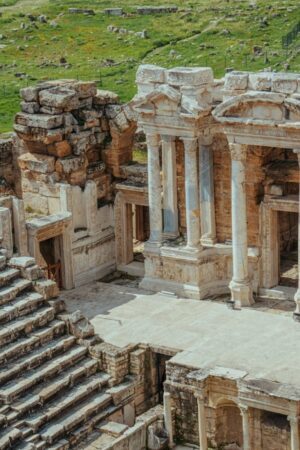
Hierapolis. Pexels
____________________________
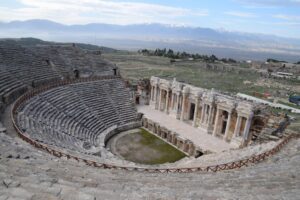
Hierapolis. Pixabay
____________________________
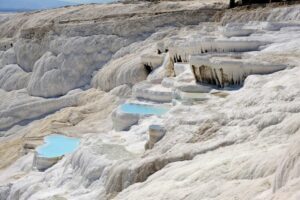
Pamukkale. Pixabay
____________________________
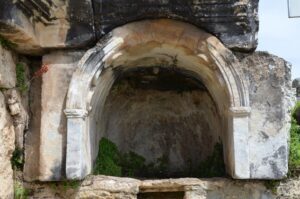
Pluto’s Gate, a sacred cave believed to be an entrance to the underworld and the oldest local sanctuary, Hierapolis. It was described by Strabo (629-30) as an orifice in a ridge of the hillside, in front of which was a fenced enclosure filled with thick mist immediately fatal to any who entered except the eunuchs of Kybele. The Plutoneion was mentioned and described later by numerous ancient writers, in particular Dio Cassius (68.27), who observed that an auditorium had been erected around it, and Damascius ap. Photius (Bibl. 344f), who recorded a visit by a certain doctor Asclepiodotus about A.D. 500; he mentioned the hot stream inside the cavern and located it under the Temple of Apollo. There is, in fact, immediately below the sidewall of the temple in a shelf of the hillside, a roofed chamber 3 m square, at the back of which is a deep cleft in the rock filled with a fast-flowing stream of hot water heavily charged with a sharp-smelling gas. In front is a paved court, from which the gas emerges in several places through cracks in the floor. The mist mentioned by Strabo is not observable now. The gas was kept out of the temple itself by allowing it to escape through gaps left between the blocks of the sidewalls. Carole Raddato, Image and text CC BY-SA 2.0, Wikimedia Commons
____________________________
Science Meets Myth: The Deadly Gas Explained
What was once seen as divine wrath has since found a rational explanation. Scientific analysis revealed that the cave emits high concentrations of carbon dioxide, a gas heavier than air that settles near the ground. Animals — smaller and closer to the earth — were the first to succumb, while humans standing upright, especially trained priests who understood when the gas levels were lower, could avoid its effects. This phenomenon, viewed in antiquity as a divine miracle, is today understood as a natural, though no less fascinating, geological feature.
The Rise and Fall of a Sacred Site
Archaeological records show that the Ploutonion remained an active place of worship and pilgrimage until the 4th century CE. With the rise of Christianity, such pagan sanctuaries lost their religious significance. By the 6th century, a series of devastating earthquakes buried the site, shrouding it in silence for over a millennium.
Sacred, Lethal, Eternal
The Ploutonion of Hierapolis represents a unique fusion of mythology, natural science, and ancient religious practice. It is a place where faith and fear, death and divinity, coexisted. In today’s world, it continues to draw the curiosity of scholars, spiritual seekers, and tourists alike — not only for its deadly beauty but for what it tells us about how ancient people interpreted and interacted with the invisible forces of the earth. Now partially restored and protected, Pluto’s Gate stands once more — not as a passage to the underworld, but as a window into humanity’s eternal attempt to make sense of life, death, and the divine.

